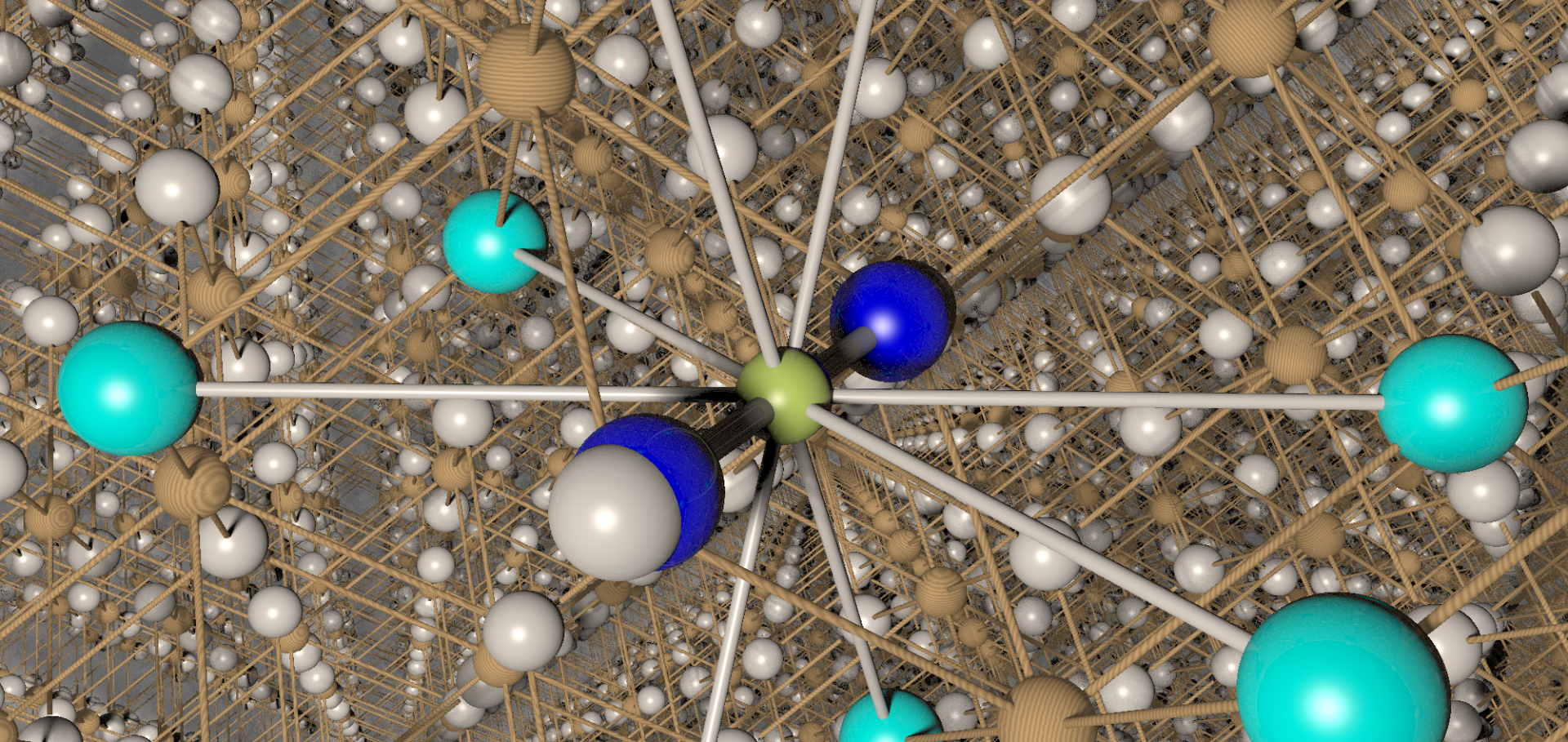Structure, antiferromagnetism and superconductivity of the layered iron arsenide NaFeAs.
Chem Commun (Camb) (2009) 2189-2191
Abstract:
A new layered iron arsenide NaFeAs isostructural with the superconducting lithium analogue displays evidence for the coexistence of superconductivity and magnetic ordering.Dipole-field distributions in complex magnetic materials
Physica B: Condensed Matter 404:5-7 (2009) 581-584
Abstract:
The probability distribution of local magnetic field values experienced by implanted muons, given no prior information on the muon site, is calculated for various arrangements of magnetic dipoles commonly found in magnetic materials. Such distributions are useful for interpreting μSR data on complex magnetic systems such as molecular magnets where there are many possible muon sites. © 2009 Elsevier B.V. All rights reserved.HiFi-A new high field muon spectrometer at ISIS
Physica B: Condensed Matter 404:5-7 (2009) 978-981
Abstract:
A new μ SR spectrometer (HiFi) is being constructed at the ISIS pulsed muon source. The spectrometer is intended for measurements in longitudinal magnetic fields up to 5 T. Here we discuss various aspects of the design and future operation of the HiFi spectrometer. Detailed analysis of the detector design is presented, and results from tests on detector prototypes are compared to simulations. Potential applications of this spectrometer in the fields of condensed matter and chemistry are also discussed. © 2008 Elsevier B.V. All rights reserved.Characterization of the antiferromagnetism in Ag(pyz)2(S2O8) (pyz = pyrazine) with a two-dimensional square lattice of Ag2+ ions.
J Am Chem Soc 131:13 (2009) 4590-4591
Abstract:
X-ray powder diffraction and magnetic susceptibility measurements show that Ag(pyz)(2)(S(2)O(8)) consists of 2D square nets of Ag(2+) ions resulting from the corner-sharing of axially elongated AgN(4)O(2) octahedra and exhibits characteristic 2D antiferromagnetism. Nevertheless, mu(+)SR measurements indicate that Ag(pyz)(2)(S(2)O(8)) undergoes 3D magnetic ordering below 7.8(3) K.Two-dimensional XY behavior observed in quasi-two-dimensional quantum Heisenberg antiferromagnets
Physical Review B - Condensed Matter and Materials Physics 79:13 (2009)


